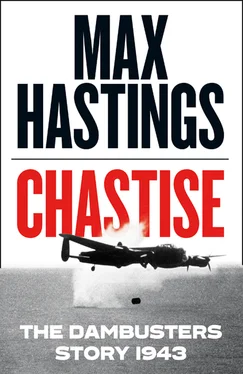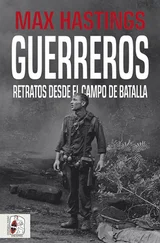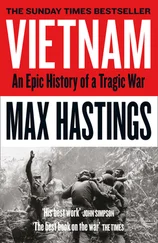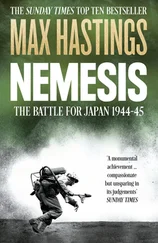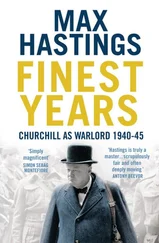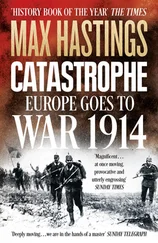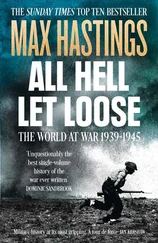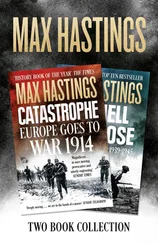His ‘Victory’ bomber, claimed Wallis in July 1940, ‘is going to be the instrument which will enable us to bring the war to a quick conclusion’. Since these aircraft would operate at an altitude beyond the reach of German fighters, they could fly ‘at their leisure and in daylight … Irreparable damage could be inflicted on the strategic communications of the German Empire by … ten or twenty machines within the course of a few weeks.’
Here was characteristic Wallis fervour: he deserved full credit for conducting unfunded and unsupported research on the science of destroying large structures from the air, at a time when the RAF was institutionally indifferent to this vital issue. However, Wallis was as wrong as the ‘bomber barons’, and remained so throughout the war, in cherishing exaggerated expectations about what air power might achieve. He was as mistaken as Sir Arthur Harris, though from a different perspective, in believing that the RAF, or indeed the USAAF, could alone defeat Nazism, or even wreck the German economy. This objective was unattainable, regardless of which targeting policy the air forces espoused, or what bombs he might devise for Allied aircraft to carry. Yet Wallis cherished one remarkable idea, that would secure his place in history.
Barnes Wallis knew nothing about the Air Staff’s exploration of targeting dams when, early in the war, he himself began studying the vulnerabilities of German power supplies, and explicitly of hydro-electric plants, during spare hours snatched from his ‘proper’ work on a projected high-altitude Wellington, and later the Windsor. He spent months considering the possibility of breaching dams with ten-ton bombs dropped by his own proposed ‘Victory’ aircraft from an altitude of forty thousand feet – three times the operating height of contemporary RAF ‘heavies’. An early enthusiast for his ideas was Gp. Capt. Fred Winterbotham, head of air intelligence at MI6, and a pre-war pioneer of the exploitation of high-altitude aerial photography. He was introduced to Wallis by a mutual friend, City banker Leo D’Erlanger, who had endeared himself to the engineer’s children by once presenting them with a pink gramophone. In February 1940 D’Erlanger brought the air intelligence officer to lunch at Effingham, thinking that Wallis and Winterbotham had common interests. Winterbotham was much taken with the cheerfully bustling Wallis household and its noisy children, the exuberant piano-playing, the obviously blissful partnership of his host and wife Molly.
Winterbotham was something of a charlatan, who played a less important role both in the Second World War and the evolution of Wallis’s schemes than he himself later professed. He was no fool, however, and like many intelligence officers was a keen networker and intriguer. He invited Wallis to lunch at the RAF Club in Piccadilly, and was persuaded by him to lobby the good and great about the Victory bomber, with a wingspan of 160 feet (against the Avro Lancaster’s eventual 102 feet) and its accompanying ‘earthquake’ bomb. Desmond Morton, Winterbotham’s old intelligence colleague, responded to this proposal from his new office in 10 Downing Street on 5 July 1940: ‘My dear Fred … The view held [here] is that such a project as you describe could not come to fruition until 1942, even if then.’ This period was, of course, Britain’s darkest of the Second World War; only by straining every sinew could the Ministry of Aircraft Production create a bare sufficiency of fighters, never mind a speculative giant bomber.
Nonetheless, through Winterbotham again, Wallis secured an audience with Lord Beaverbrook, Minister of Aircraft Production, at which he pressed his Victory project. The gnome-like tycoon seemed more interested in persuading his visitor to travel to America to explore pressurised aircraft cabins, but their meeting yielded one positive result: it enabled Wallis to secure access to the government research facility at the former Road Research Laboratory at Harmondsworth, just west of London, together with the Building Research Station near Watford in Hertfordshire.
In August 1940 Wallis began tests related to the projected deep-penetration bomb, for which he was also admitted to the wind tunnel at Teddington’s National Physical Laboratory. In retrospect it seems astonishing, and yet also a triumph of official imagination, that even while Britain faced its darkest days, and Fighter Command was challenging the Luftwaffe against odds, a ‘boffin’ was able to undertake such futuristic research almost literally on the ground beneath which the Battle of Britain was being fought. From October onwards Wallis attended a series of meetings with the Ministry of Aircraft Production’s Air Vice-Marshal Francis Linnell, Controller of Research and Development, and Dr David Pye, the MAP’s director of scientific research, together with his deputy Ben Lockspeiser. The last, especially, would play a role in the Chastise saga which continued until the day the operation was launched.
In November the BRS’s Dr Norman Davey began construction of a 1:50 scale model of the Möhne, across a small stream in secluded woodland at the Station’s headquarters in Hertfordshire. This project reflected the interest not merely of Wallis, but of the RAF’s most senior officers, who had identified the dam as a target. At the same period Wallis was granted access to the Air Ministry’s 1939 research on the Möhne, emphasising the fact that he and the uniformed planners had been thinking along parallel lines. This made Wallis all the more irritated that so many bureaucratic obstacles were placed in the way of what seemed to him an obvious war-winner. In November 1940 also, he wrote a testy note to AVM Arthur Tedder, then serving at the MAP: ‘As a result of the continuing opposition that we have met, it has been necessary to resort to these laborious and long-winded experiments, in order to prove that what I suggested last July [destroying targets with deep-penetration bombs] can in reality be done.’
Norman Davey’s team employed technical data on the Möhne dam’s construction published at the time of its opening in 1913, though the Watford modellers somewhat distorted their own outcome by treating metres as yards in the scaling exercise. Hundreds of thousands of hand-cast mortar blocks were made and laid in the freezing conditions that prevailed through that winter. The model was completed on 22 January 1941, and explosive tests began a few days later. The first results of these were felt by nearby ‘Dig for Victory’ vegetable allotment-holders, who found their plots at Garston suddenly flooded by an inexplicable onrush of water. This also bewildered the BRS testers, because while their dam was damaged by successive explosions, it was not completely breached.
In March 1941 Wallis circulated a long paper entitled ‘A Note on Methods of Attacking the Axis Powers’, in which he wrote about water and coal seams as targets. Such natural resources, he observed, had the great merit that they could not be moved or dispersed: ‘If their destruction or paralysis can be accomplished, THEY OFFER A MEANS OF RENDERING THE ENEMY UTTERLY INCAPABLE OF CONTINUING TO PROSECUTE THE WAR.’ He distributed a hundred copies of this paper, with its extravagant predictions, to his aviation contacts – several journalists received it, together with four Americans and Frederick Lindemann, soon to become Lord Cherwell. Wallis’s daughter later remarked on her father’s carelessness about security: ‘I can hear him now, describing to a friend some interesting feature of his work, laughing, “Frightfully secret, my dear fellow.”’
W/Cdr. Sydney Bufton, an officer with operational experience over Germany who had recently become deputy director of Bomber Operations at the Air Ministry, was sufficiently interested to visit Wallis in his office at Burhill Golf Club, near Weybridge, where the design team found a wartime home after the Vickers plant was bombed. A dams sub-committee was formed at the Ministry of Aircraft Production, which in the following month discussed the Möhne as an important target. Initial calculations suggested that a bomb weighing twelve tons would be required to destroy it.
Читать дальше
